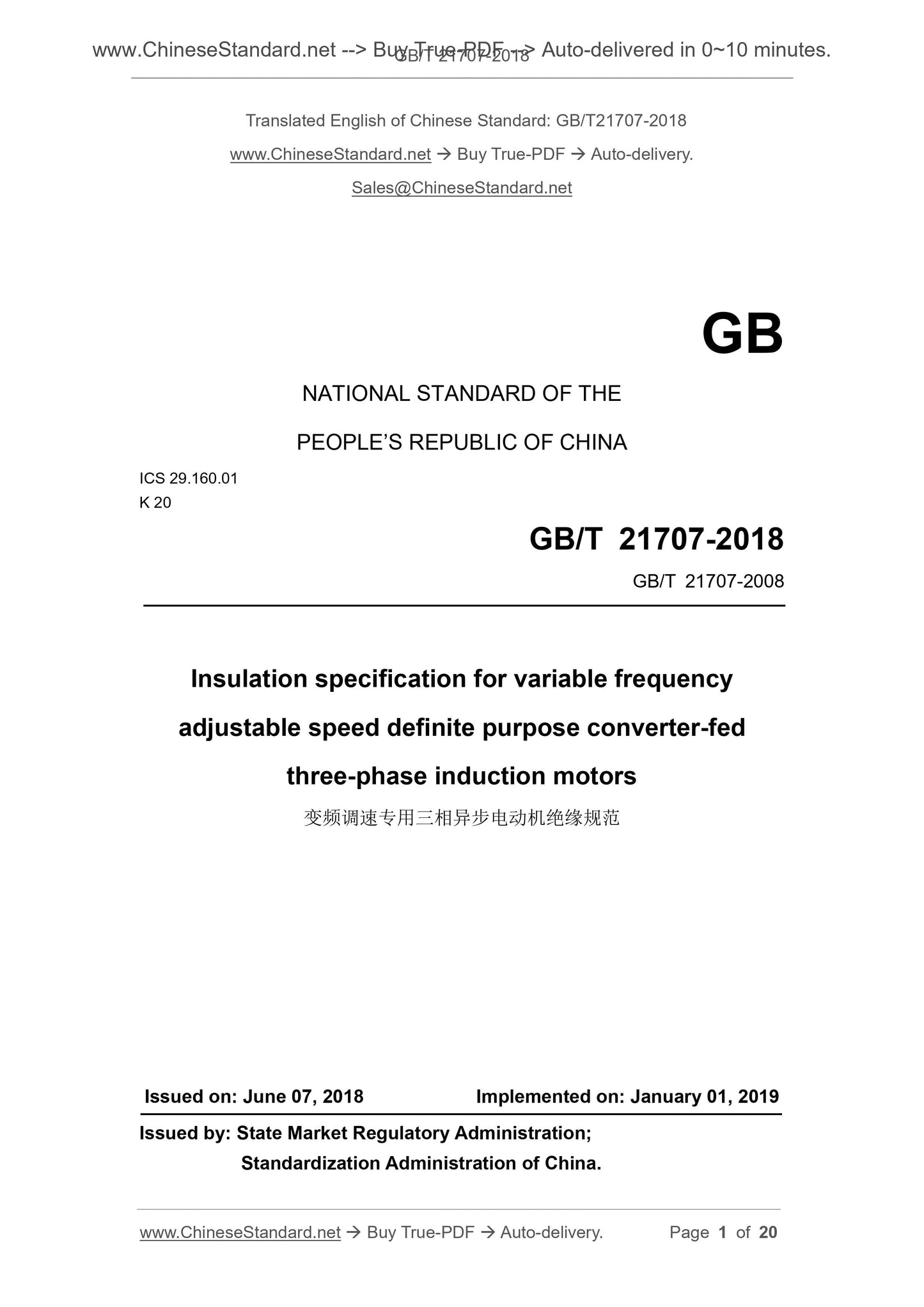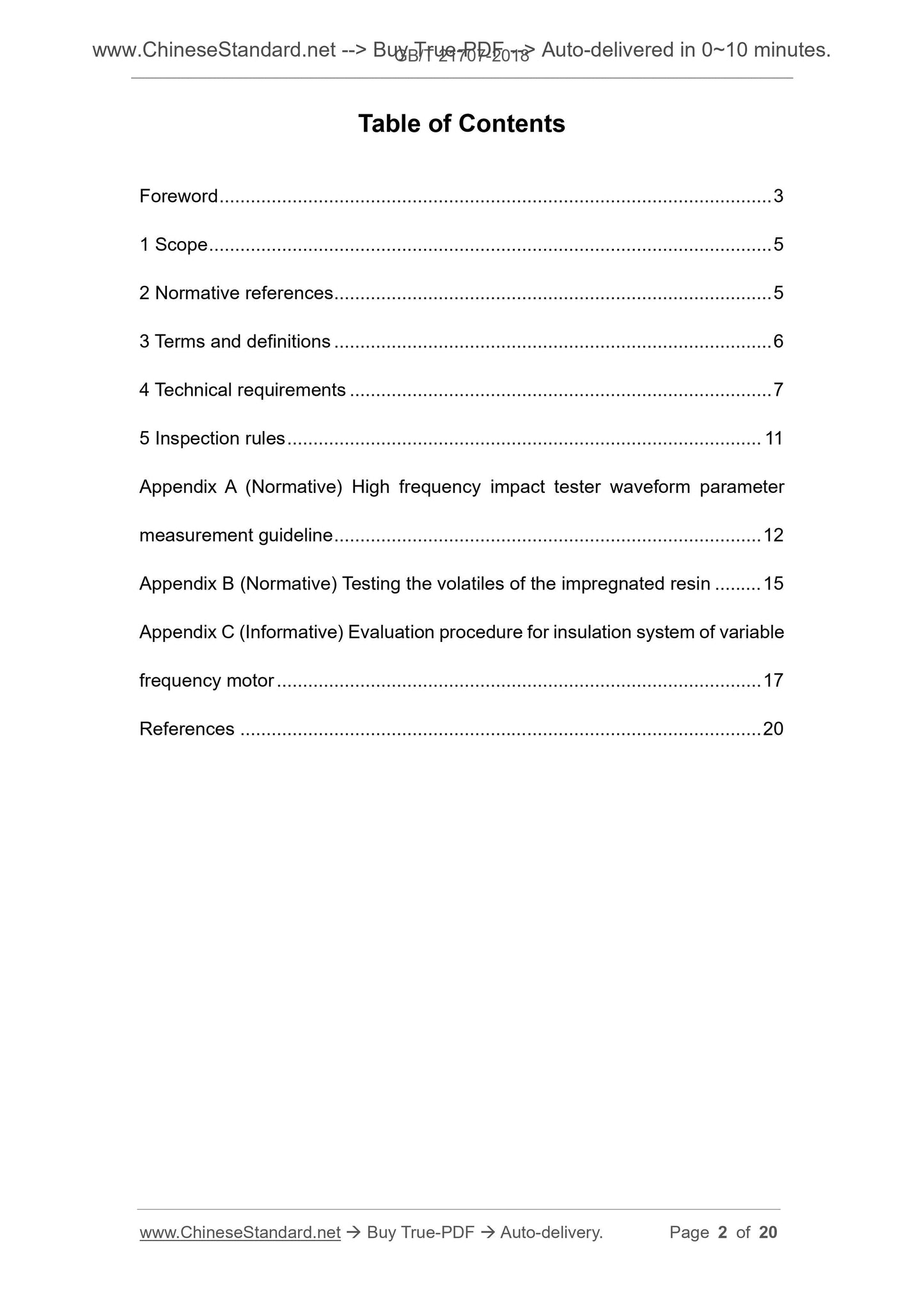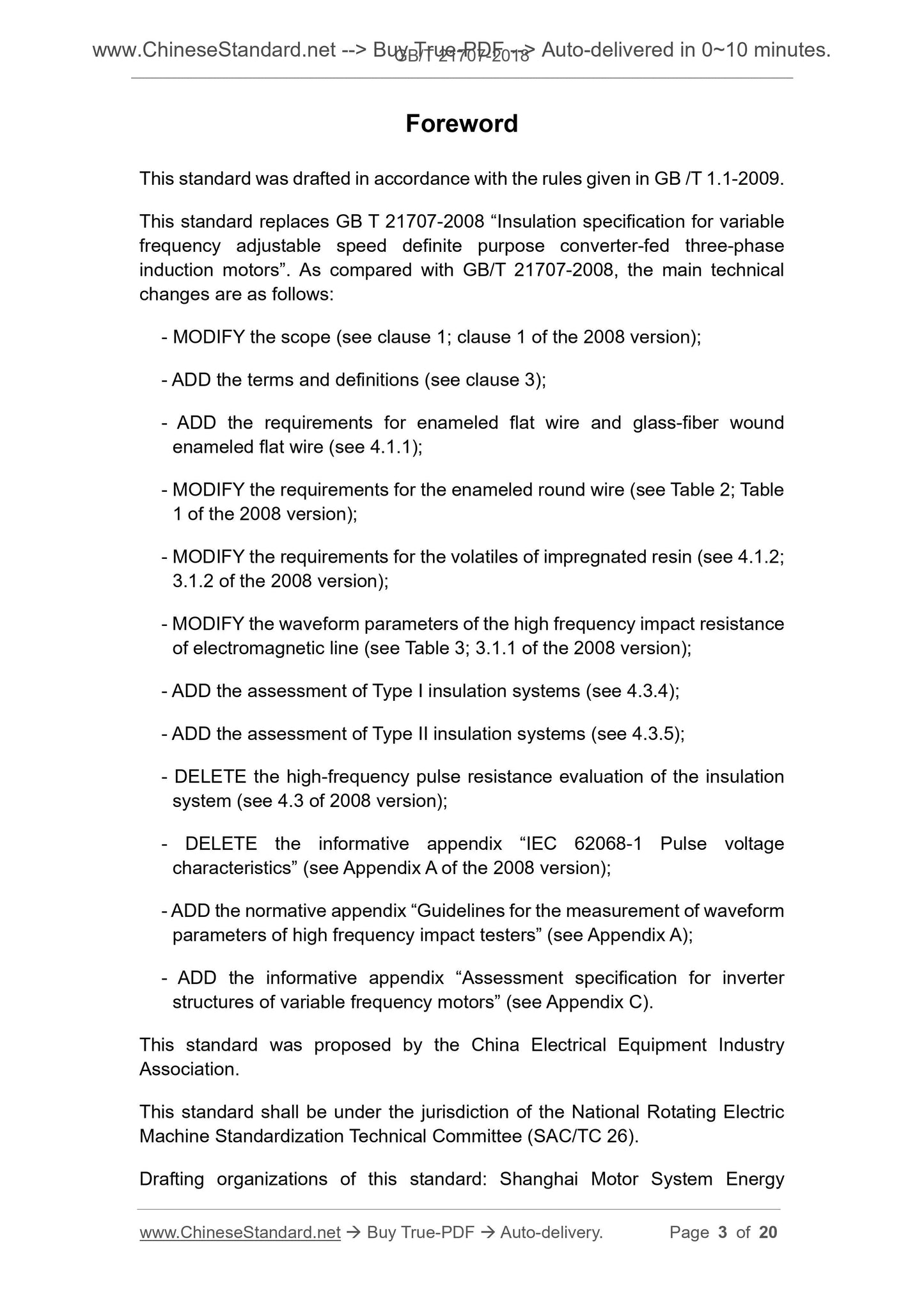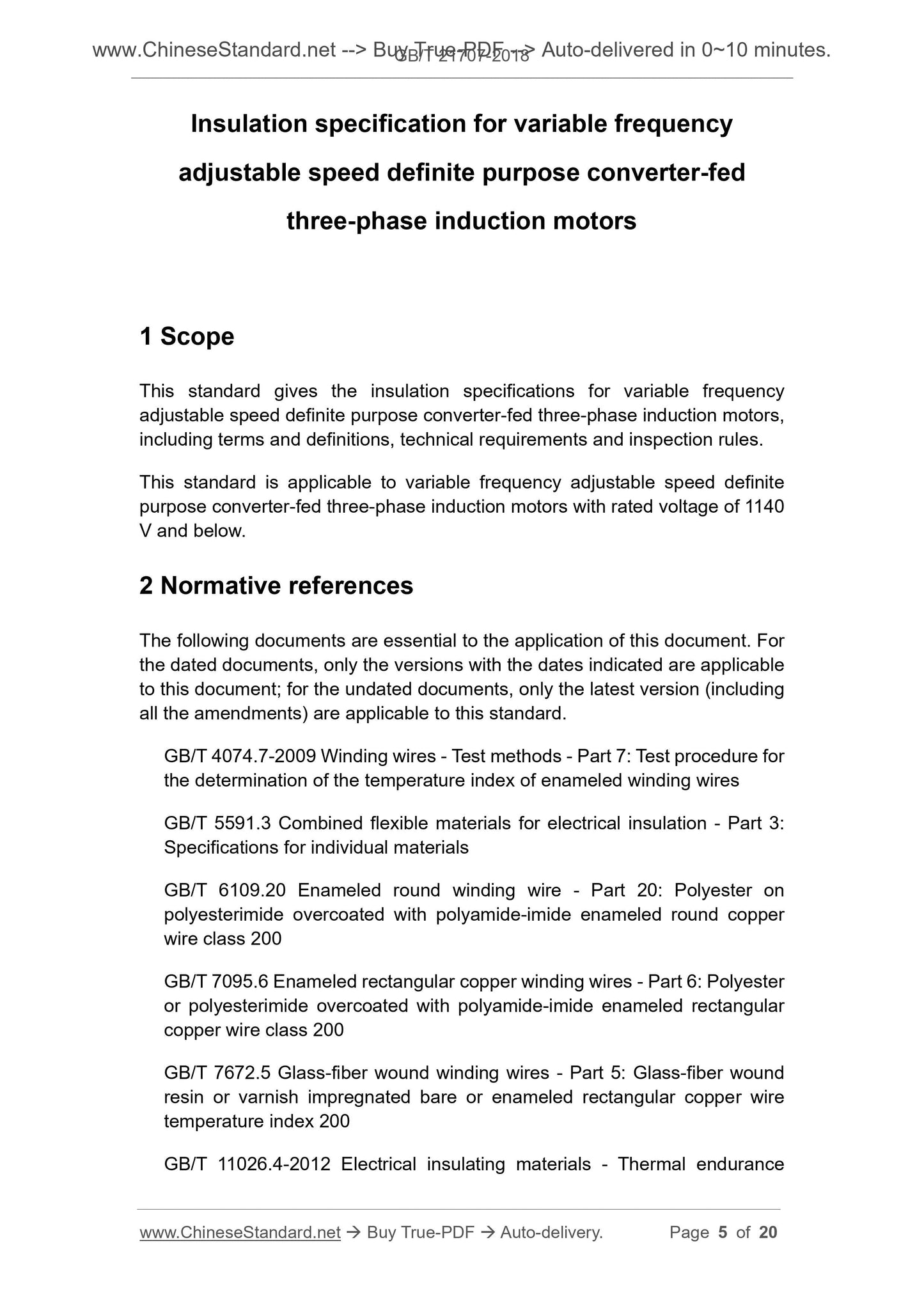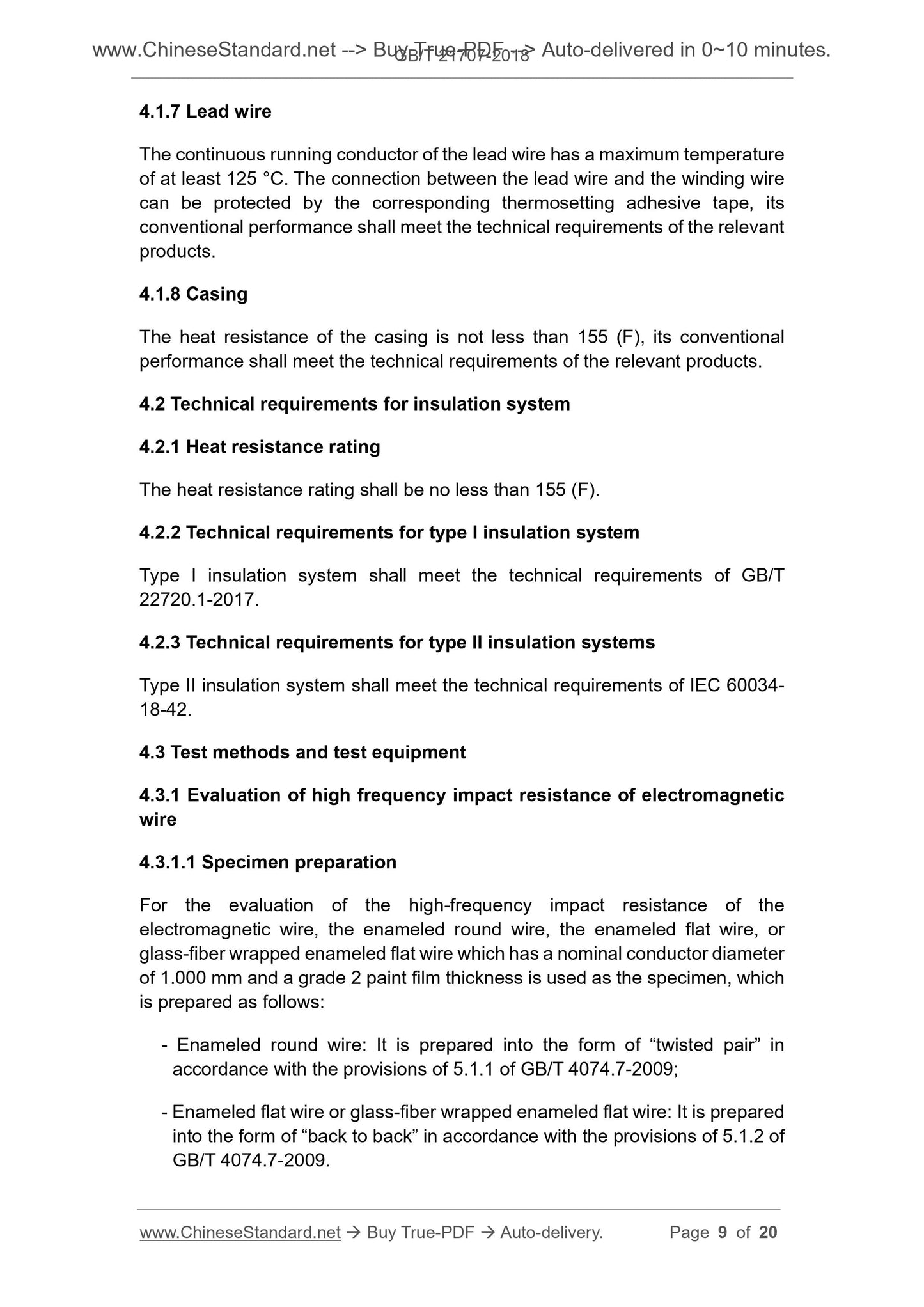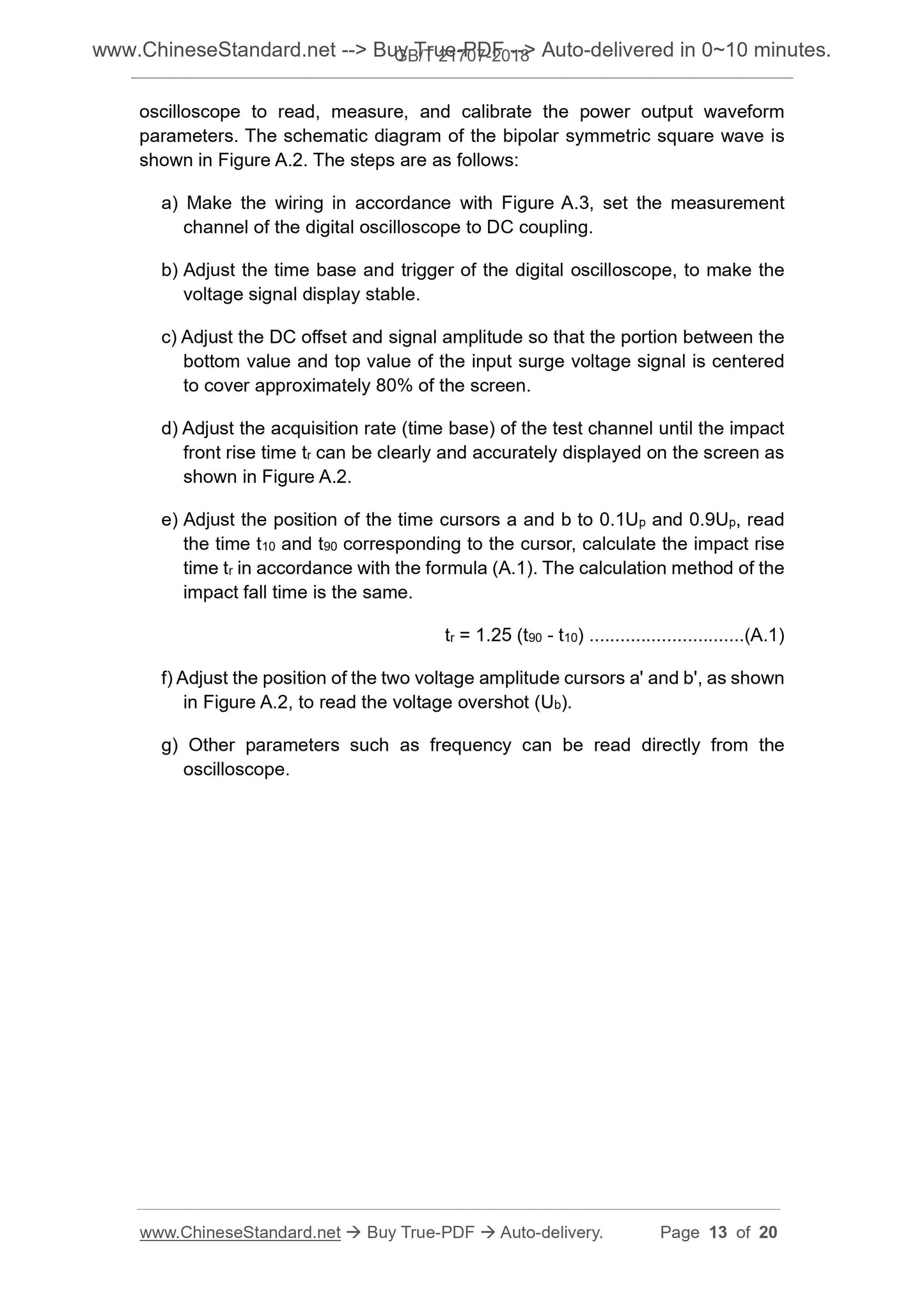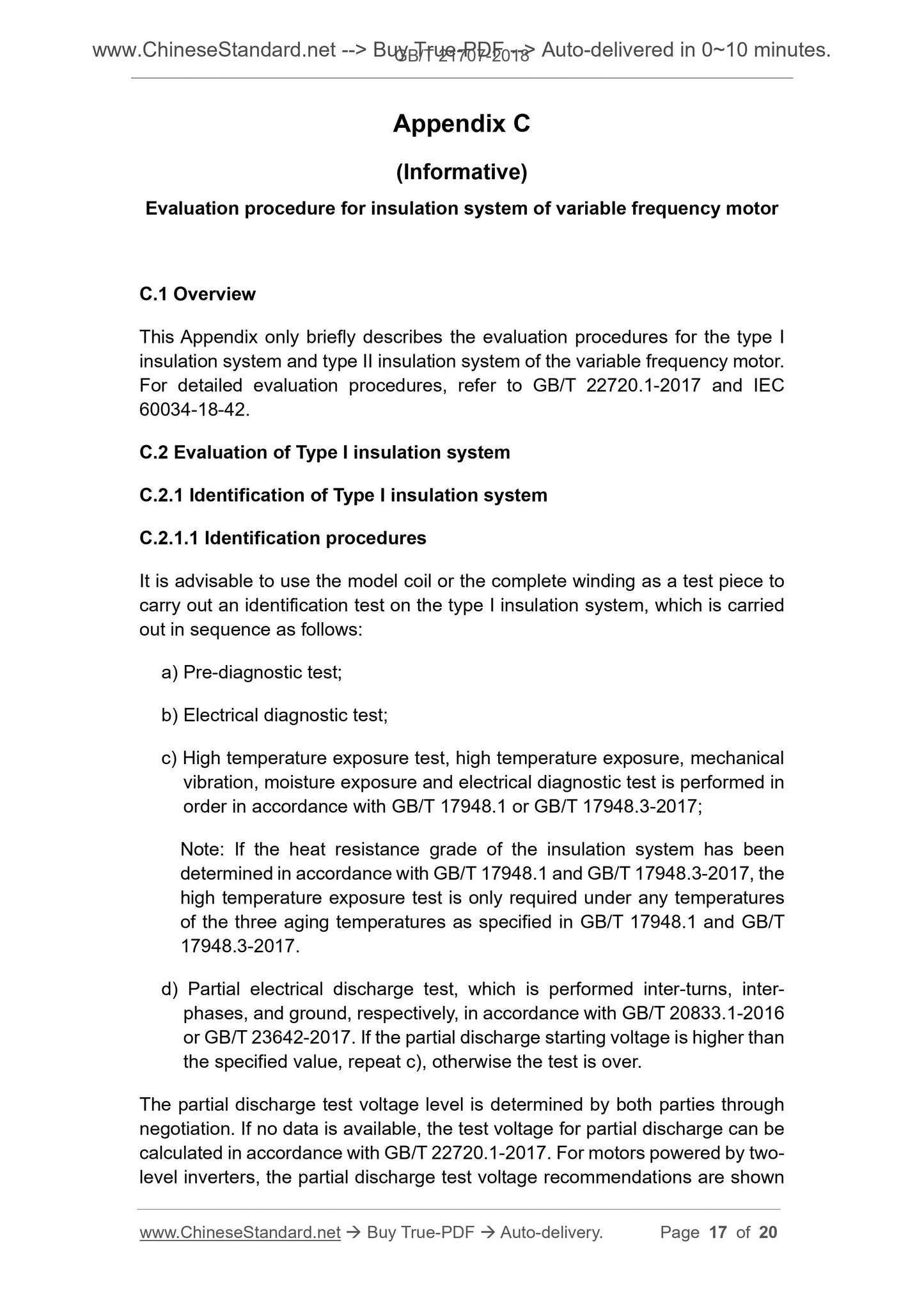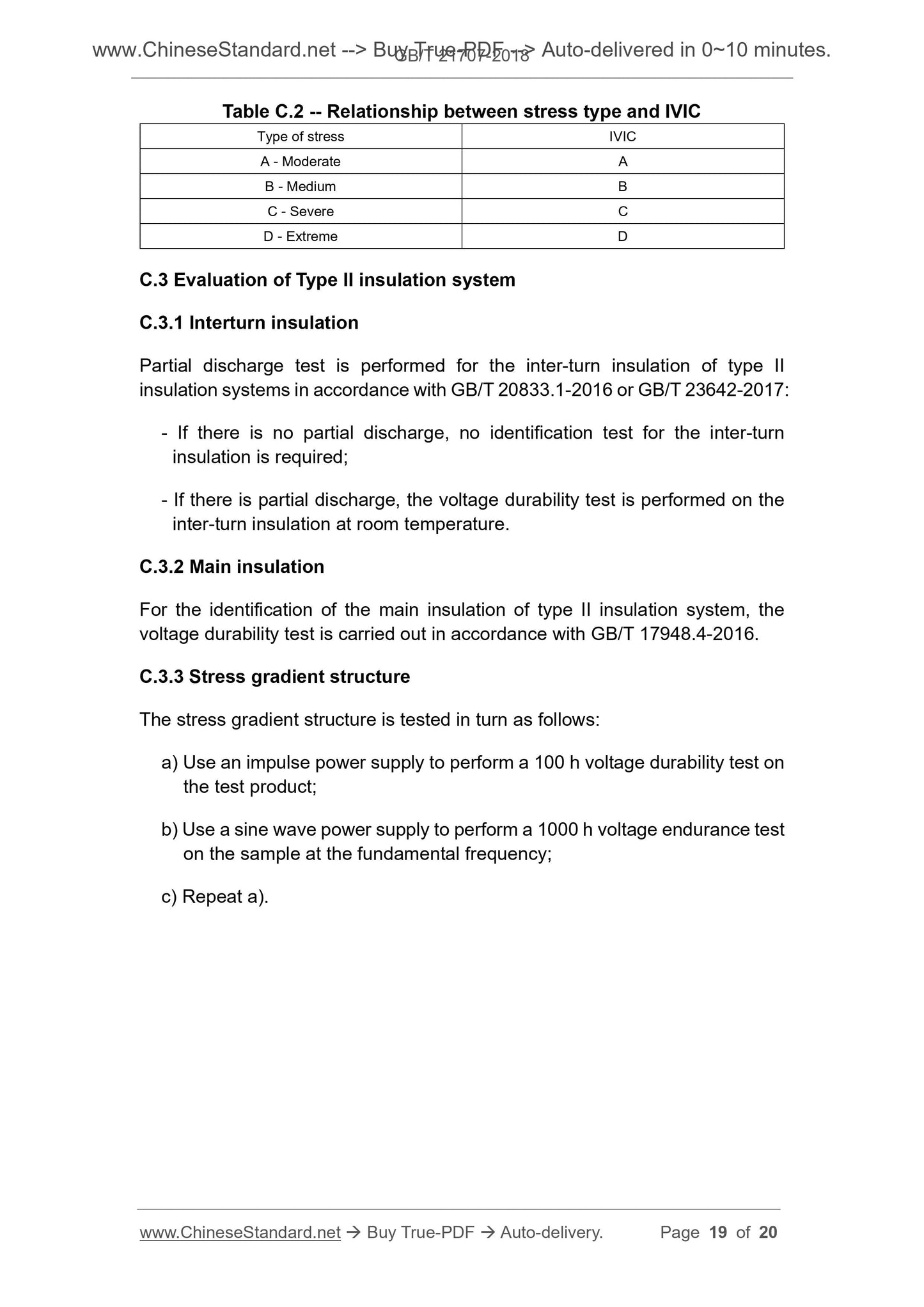1
/
of
8
www.ChineseStandard.us -- Field Test Asia Pte. Ltd.
GB/T 21707-2018 English PDF (GB/T21707-2018)
GB/T 21707-2018 English PDF (GB/T21707-2018)
Regular price
$150.00
Regular price
Sale price
$150.00
Unit price
/
per
Shipping calculated at checkout.
Couldn't load pickup availability
GB/T 21707-2018: Insulation specification for variable frequency adjustable speed definite purpose converter-fed three-phase induction motors
Delivery: 9 seconds. Download (and Email) true-PDF + Invoice.Get Quotation: Click GB/T 21707-2018 (Self-service in 1-minute)
Newer / historical versions: GB/T 21707-2018
Preview True-PDF
Scope
This standard gives the insulation specifications for variable frequencyadjustable speed definite purpose converter-fed three-phase induction motors,
including terms and definitions, technical requirements and inspection rules.
This standard is applicable to variable frequency adjustable speed definite
purpose converter-fed three-phase induction motors with rated voltage of 1140
V and below.
Basic Data
| Standard ID | GB/T 21707-2018 (GB/T21707-2018) |
| Description (Translated English) | Insulation specification for variable frequency adjustable speed definite purpose converter-fed three-phase induction motors |
| Sector / Industry | National Standard (Recommended) |
| Classification of Chinese Standard | K20 |
| Classification of International Standard | 29.160.01 |
| Word Count Estimation | 14,114 |
| Date of Issue | 2018-06-07 |
| Date of Implementation | 2019-01-01 |
| Issuing agency(ies) | State Administration for Market Regulation, China National Standardization Administration |
Share
